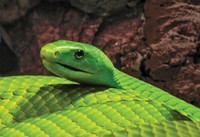Advertisement
Grab your lab coat. Let's get started
Welcome!
Welcome!
Create an account below to get 6 C&EN articles per month, receive newsletters and more - all free.
It seems this is your first time logging in online. Please enter the following information to continue.
As an ACS member you automatically get access to this site. All we need is few more details to create your reading experience.
Not you? Sign in with a different account.
Not you? Sign in with a different account.
ERROR 1
ERROR 1
ERROR 2
ERROR 2
ERROR 2
ERROR 2
ERROR 2
Password and Confirm password must match.
If you have an ACS member number, please enter it here so we can link this account to your membership. (optional)
ERROR 2
ACS values your privacy. By submitting your information, you are gaining access to C&EN and subscribing to our weekly newsletter. We use the information you provide to make your reading experience better, and we will never sell your data to third party members.
Biological Chemistry
New Worm Weapons For Grazing Livestock
March 17, 2008
| A version of this story appeared in
Volume 86, Issue 11


When sheep and cattle graze, they sometimes devour far more than a square meal. Increasingly, the grazers are becoming infected with drug-resistant parasitic worms that cause life-threatening anemia. A research team led by Ronald Kaminsky at the Novartis Animal Health Research Center, St. Aubin, Switzerland, has reported the first new class of worm—killing-but ruminant-friendly—compounds in 25 years in Nature (2008, 452, 176). The "worm weapons" are a family of amino-acetonitrile derivatives (the most potent one shown) that "will be the cause of great excitement, especially because they are active against a broad range of nematode pathogens," comment parasitologists Roger K. Prichard and Timothy G. Geary of McGill University, in Montreal, in an associated Nature commentary. The compounds paralyze the worms by targeting previously uncharacterized receptor subunits involved in the worms' neurotransmission. Knowing this mechanism of action at the outset may help monitor, if not delay, eventual drug resistance should the compounds reach the veterinary market, Prichard and Geary note.





Join the conversation
Contact the reporter
Submit a Letter to the Editor for publication
Engage with us on Twitter